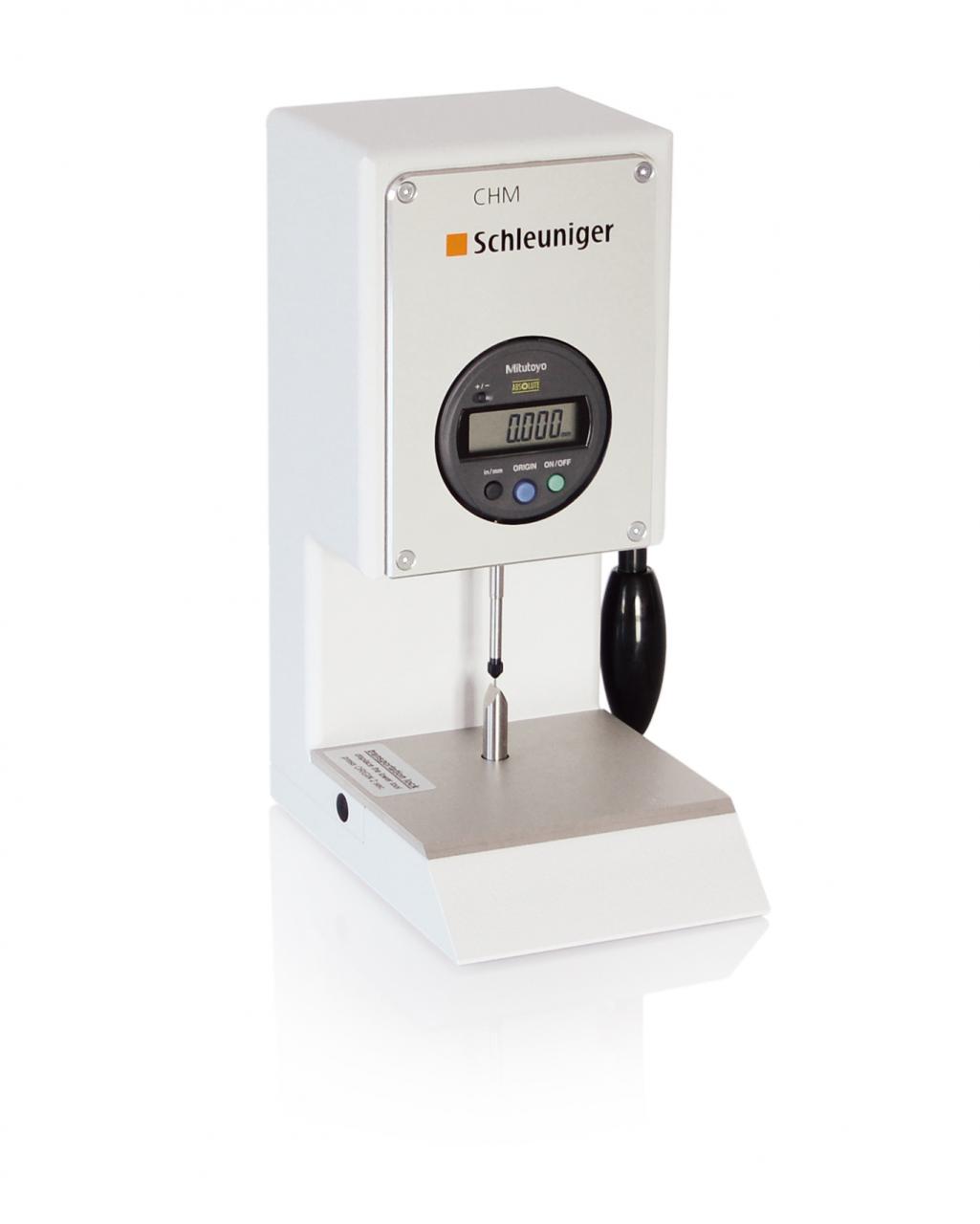CHM
Dispositivo de medición de altura del prensado
Sinopsis
El dispositivo CHM se diferencia de las unidades portátiles convencionales por su facilidad de medición. El proceso de medición es menos complicado que las unidades portátiles, por lo que se reduce el tiempo que se requiere para hacer la medición. El operador puede usar ambas manos para sujetar la terminal en posición en el área de trabajo iluminada. Esto asegura que la terminal sea colocado apropiadamente en el micrómetro. La aguja con resorte propicia que los resultados de la medición sean más consistentes.
- Puntos de medición de la cuchilla y la aguja
- Colocación más fácil de terminales
- Fuerza de medición consistente
- Confiabilidad y repetibilidad mejoradas
Rango de Aplicación
The CHM device is most commonly used for crimp height measurement on standard, non-insulated, crimp terminals. Most commonly used for B-style crimps, but others may be possible.
Información Técnica
| Calibre | Standard: Mitutoyo Digimatic, Optional: Sylvac |
| Resolución | Standard: 0.01 mm (0.0004”) |
| Suministro electrico | 110/220 VAC |
| Dimensiones (L x A x A) | 155 x 125 x 233 mm (6.1 x 4.9 x 9.2”) |
| CE aprobado | The CHM fully complies with all CE and EMC equipment guidelines relative to mechanical and electrical safety and electromagnetic compatibility. |
| Nota Importante | Schleuniger recommends that wire samples be submitted in case where there is doubt as to the processing capabilities of a particular machine. |
Información Adicional
Function
The standard measuring contacts on the CHM are the point-and-blade combination designed specifically for measuring crimp height. The lever on the side raises the top pin allowing the operator to insert the sample. When the operator lowers the lever, the spring-loaded pin drops to make contact with the sample. The operator is then free to adjust the sample as needed for the most accurate measurement. By using the CHM, your crimp height testing process will become more efficient, reducing the amount of time required for collecting test data. Furthermore, the spring-loaded pin encourages measurement results to be more consistent between operators.


